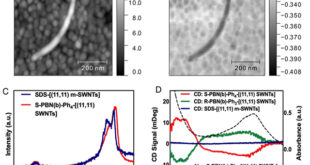Significance Statement
Aluminum metal is known for its low weight and corrosion resistance and finds its applications in structural materials. Smelting of aluminum has been industrialized as the Hall-Héroult process. Electrowinning of aluminum from alumina-dissolved cryolite molten salts is performed at 1000 °C. Instead of high temperature process, medium and low temperature electrodeposition is fascinating as that can be used as a new aluminum coating process.
Different kinds of medium-low temperature baths for aluminum and aluminum alloy electroplating, include organic solvents like ethers, aromatic hydrocarbons, sulfones and ionic liquids. These organic solvents are employed for the enhancement of corrosion resistance of magnesium alloys and steel. The redox potential of aluminum is low and the theoretical capacity is high. Hence aluminum electroplating baths are captivating as a negative electrode material for the aluminum ion batteries. Dr. Atsushi Kitada and colleagues from Kyoto University in Japan reported aluminum electroplating glyme baths in which aluminum is electrodeposited even at room temperature. The work is now published in peer-reviewed journal, Electrochimica Acta.
At electrodeposition temperatures, the usual organic solvents are highly volatile. Since ionic liquids are thermally and chemically stable and also less volatile at room temperature, they are adorable for electroplating baths. On comparing ionic liquids with organic solvents, however, cost of the chemicals required for the bath preparation is high for ionic liquids.
Finding a cost effective and safe substitute for aluminum electroplating baths is important. Currently glymes, i.e. glycol ethers, have found to be relatively safe solvents for lithium and magnesium ion batteries, because they have boiling points above 150 °C and relatively low volatilities at room temperature. The work reports on room temperature aluminum electrodeposition using aluminum chloride (AlCl3) and glyme with the ratio AlCl3:diglyme (G2) = 1:5 by mol, which was the first report for aluminum electroplating glyme baths.
From then fluorine-containing aluminum electrolytes with glymes were stated for aluminum redox at room temperature. However, anodic dissolution in these fluorine-containing baths was difficult. As compared to the AlCl3-G2 bath, the redox current density was one-order of magnitude smaller. Furthermore, the electrochemically active species in the AlCl3-G2 bath had not been unveiled.
The team of authors conferred the electrochemical properties of AlCl3/glyme solutions using four kinds of glymes. By surprise, electrodeposition was only successful from G2 solutions. As per bath characterization and Raman spectroscopy, only G2 can form electrochemically active Al-Cl-glyme complex cations, which can then undergo easy desolvation of the glymes and subsequent reduction of Al3+.
The authors studied about the series of AlCl3-containing glyme baths to develop safe electrolytes for aluminum electrodeposition. Then they finally found out G2 complex is electrochemically reducible to metallic aluminum due to the easy desolvation of G2 from the Al-Cl-G2 complex. The type of glymes are strongly be influenced by electroplating of aluminum, while in variation with lithium and magnesium electrodeposition.
Henceforth, the desolvation of glymes from Al-Cl-glyme cations and their subsequent reduction is exceptionally easy for the G2 complexes. Notably, the black appearance of the aluminum electrodeposits was caused by the surface morphology; by Ar+ etching, black color disappeared, meaning that its rough surface was not due to impurities. AlCl3/glyme baths such as bright, flat electrodeposition using additives are auspicious.

Journal Reference
Atsushi Kitada , Kai Nakamura, Kazuhiro Fukami, Kuniaki Murase, Electrochemically active species in aluminum electrodeposition baths of AlCl3/glyme solutions. Electrochimica Acta, Volume 211, 2016, Pages 561–567.
Department of Materials Science and Engineering, Kyoto University, Kyoto 606-8501, Japan.
Go To Electrochimica Acta
 Advances in Engineering Advances in Engineering features breaking research judged by Advances in Engineering advisory team to be of key importance in the Engineering field. Papers are selected from over 10,000 published each week from most peer reviewed journals.
Advances in Engineering Advances in Engineering features breaking research judged by Advances in Engineering advisory team to be of key importance in the Engineering field. Papers are selected from over 10,000 published each week from most peer reviewed journals.


